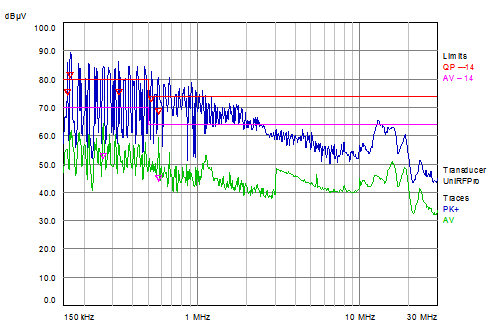Other Parts Discussed in Thread: TCAN334
Dear Team,
our customer has problems passing the EN55014 spec / ‘Conducted disturbance additional terminals’.
The HVD234 is above the peak spec for lower frequencies (< 1MHz).
Changing the slope resistor did not help on the setup.
Do you have some guidance what the customer can check & try to improve EMI performance?
Thanks and best regards
Martin
P.S.: Please check the link shared offline / comment field


